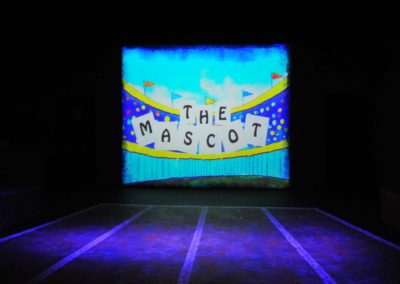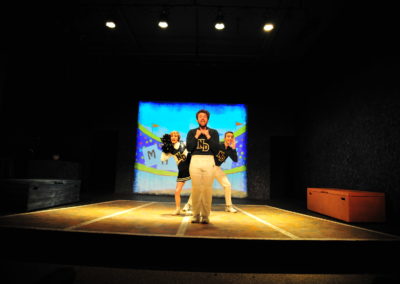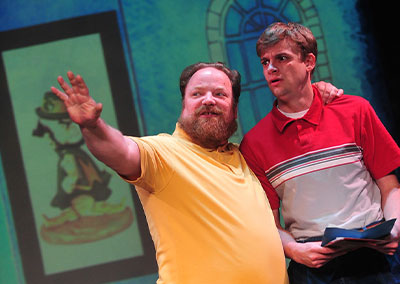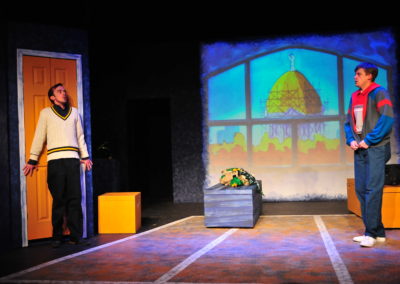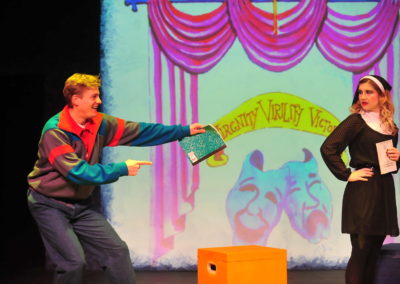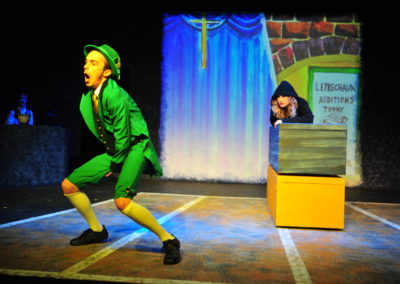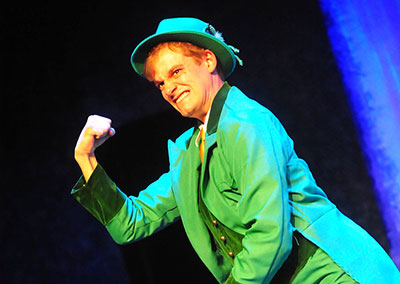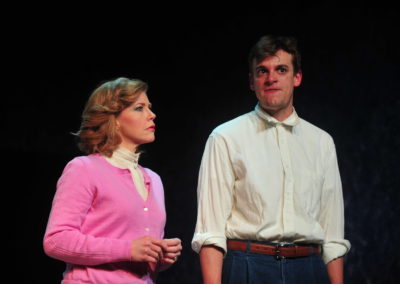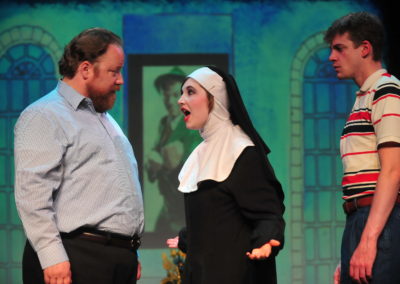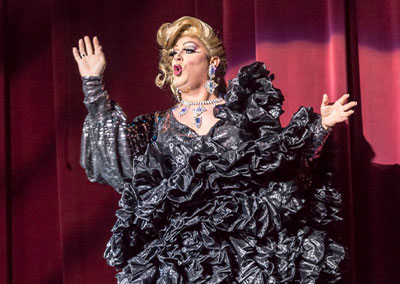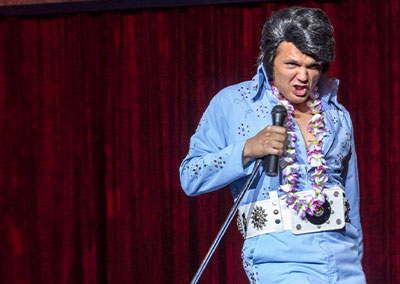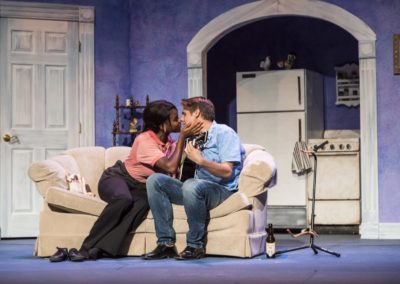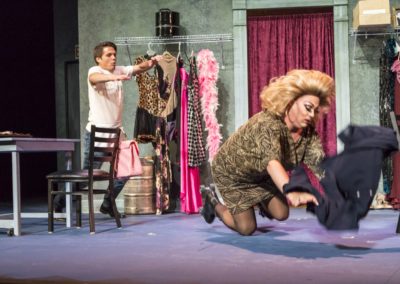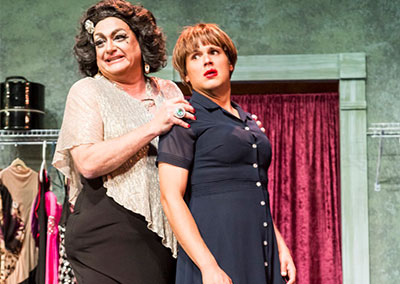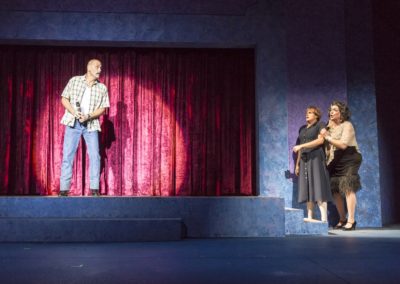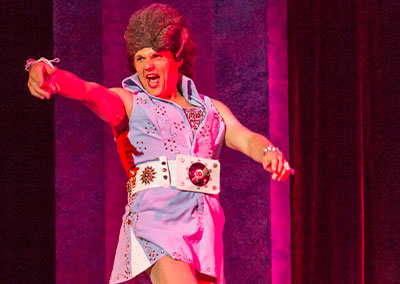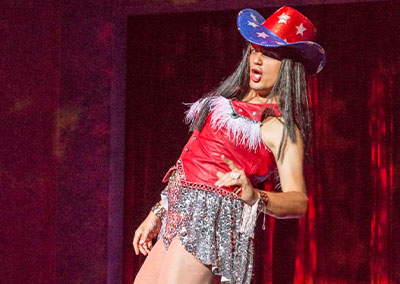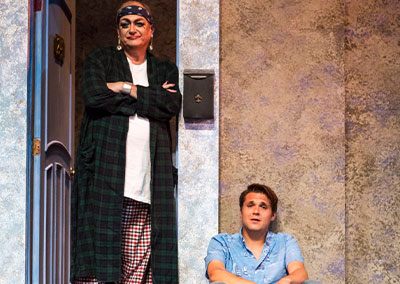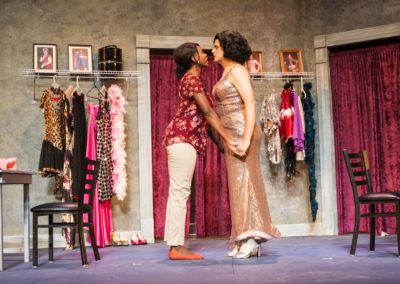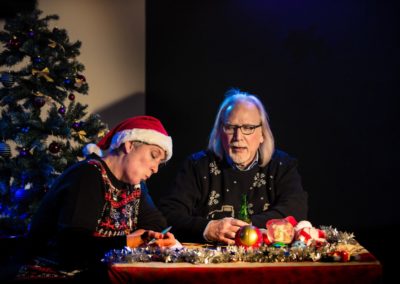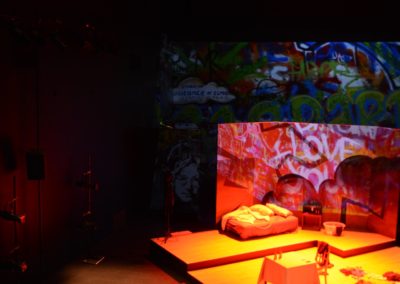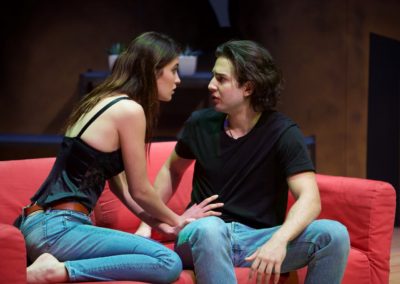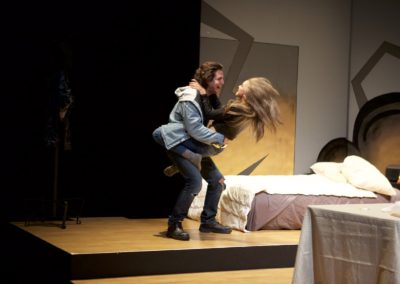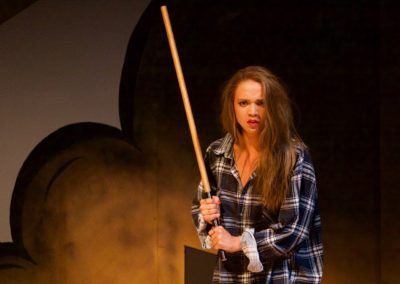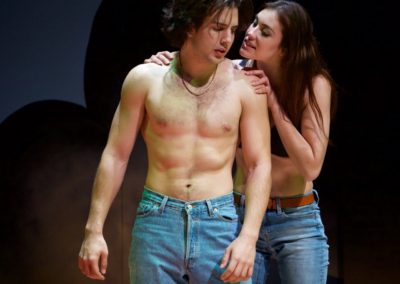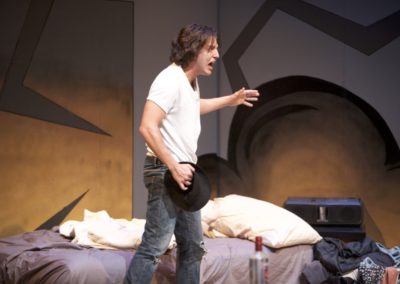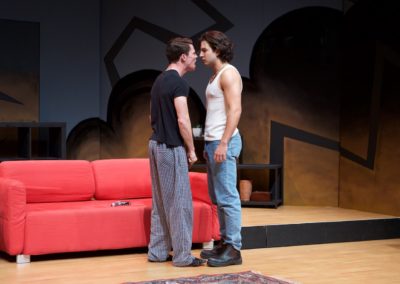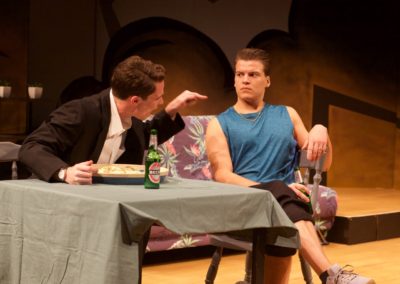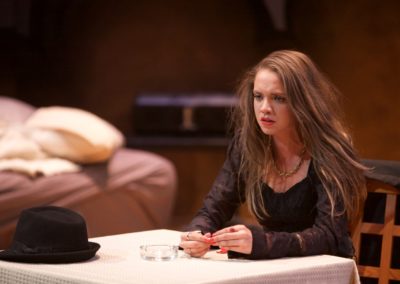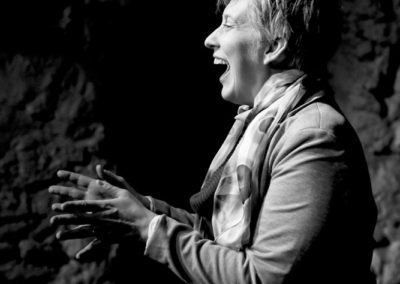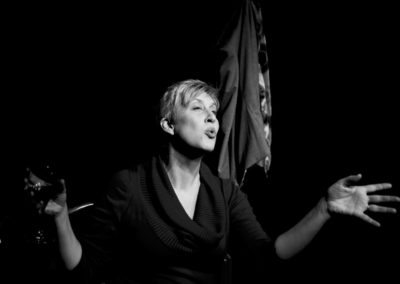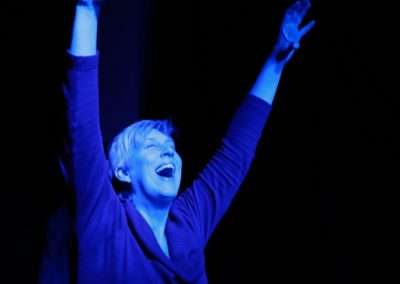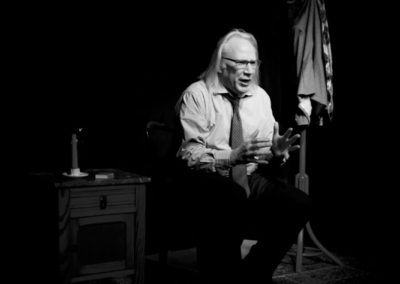The Mascot
The Mascot by Jerry Hickey
The Living Room TheatreDirector's Program Notes
Production Concept for The Mascot
A dark satire rendered with Durangian absurdity, The Mascot pokes fun at Notre Dame University’s deification of football, and by extension, all such vaunted institutions. Though not specifically within Hickey’s sphere of ridicule, the likes of KU basketball or our beloved Chiefs and Royals are not far removed from his lampooning of the Fighting Irish. We could just as well envision Phog Allen or George Brett as potential echoes of Hickey’s treatment of Knute Rockne. In sum, our audience will be treated to an evening of caustic wit, cartoonish gags, head-spinning ridiculousness, and (like Durang) a requisite dose of human truth.
The story centers on Rockne’s namesake, Knute, whose quest to outmaneuver his manipulative father⎯the hard-nosed Darby⎯results in being cast as ND’s venerable mascot, The Leprechaun. Knute’s half-hearted pursuit of becoming “the mascot” facilitates the play’s crazed antics, comic hijinks, and Aristophanic silliness. From the foibles of Darby and Dooley to Dia’s cunning and Astrid’s wiles, we will conjure an irreverent brand of comedy in the key of a Warner Brothers cartoon. Dooley’s continual comeuppance might remind us of Wiley E. Coyote, just as Darby’s empty bravado does Foghorn Leghorn; Chaplain Reamus could pass as a crosspollination of Porky Pig and Daffy Duck, with the former echoed by Reamus’s bumbling charm and the latter his propensity for injury. The alluringly devious Dia has more than a hint of Bugs Bunny, and there is a lovable—if often feigned⎯innocence in Astrid that channels Tweety Bird. Indeed, the Warner Brothers cartoon serves as the basis for The Mascot’s soundscape and scenography, a comic world in which anything is possible, such as Dooley falling from atop the ND Dome and rebounding off Reamus, who for the sake of comic absurdity, consistently and conveniently arrives in the wrong place at the “right” time. Thus, the sounds of our world will be punctuated by a combination of live and recorded music, with the former provided by a foley artist, who will deploy everything from a slide whistle to a crank to punctuate comic moments and augment the action. Scenic projections will likewise support the storytelling and be a crucial part of executing the script’s numerous “special effects.”
The production’s rhythms will be as upbeat and bouncy as its visual elements cartoonish and off-kilter. We will use malleable set pieces that help suspend disbelief while serving as a sofa and dorm bed in one scene to a ledge atop the Dome in another. The projected images will supplement these set pieces to create each of the world’s locations, the configuration of which will be the responsibility of our 3-person ensemble of cheerleaders, all of whom will exist as characters in the play’s zany world. As such, they will partake in choreographed numbers that flesh out and complement Hickey’s satirical jest at ND football.
All the elements of design will serve as a canvas of sorts to support the most critical element of the production: the performances. Indeed, The Mascot is an actor-driven piece that—like all worthy theatre-—is designed to engage the audience’s imagination. It is therefore our goal to create a world that captures the play’s satirical spirit, as we take our audience on a journey into the theatrical imagination in which amusement and delight are its leitmotifs.
GeekPrank.com will make everyone believe they are looking at a real Windows XP operating system, but the thruth is that this is just a simulator running in a web browser.
Cast & Design Team
- Choreographer:
- Tracy Terstriep
- Set Design/Lighting Design:
- Dennis Christilles
- Costume Design:
- Kelly Vogel
- Projections Design:
- Rana Esfandiary
- Sound Design:
- Jon Robertson
- Stage Manager:
- Alex Murphy
- Props Master:
- Curtis Smith
- Cast:
- Knute: Sam Cordes
- Dia: Emma Carter
- Darby: Matt Rapport
- Astrid: Jen Mays
- Dooley: R.H. Wilhoit
- Chaplain Reamus: Coleman Crenshaw
- Mathew Michael: Ensemble
- Alisa Lynn: Ensemble
- Jake Gillespie: Ensemble

